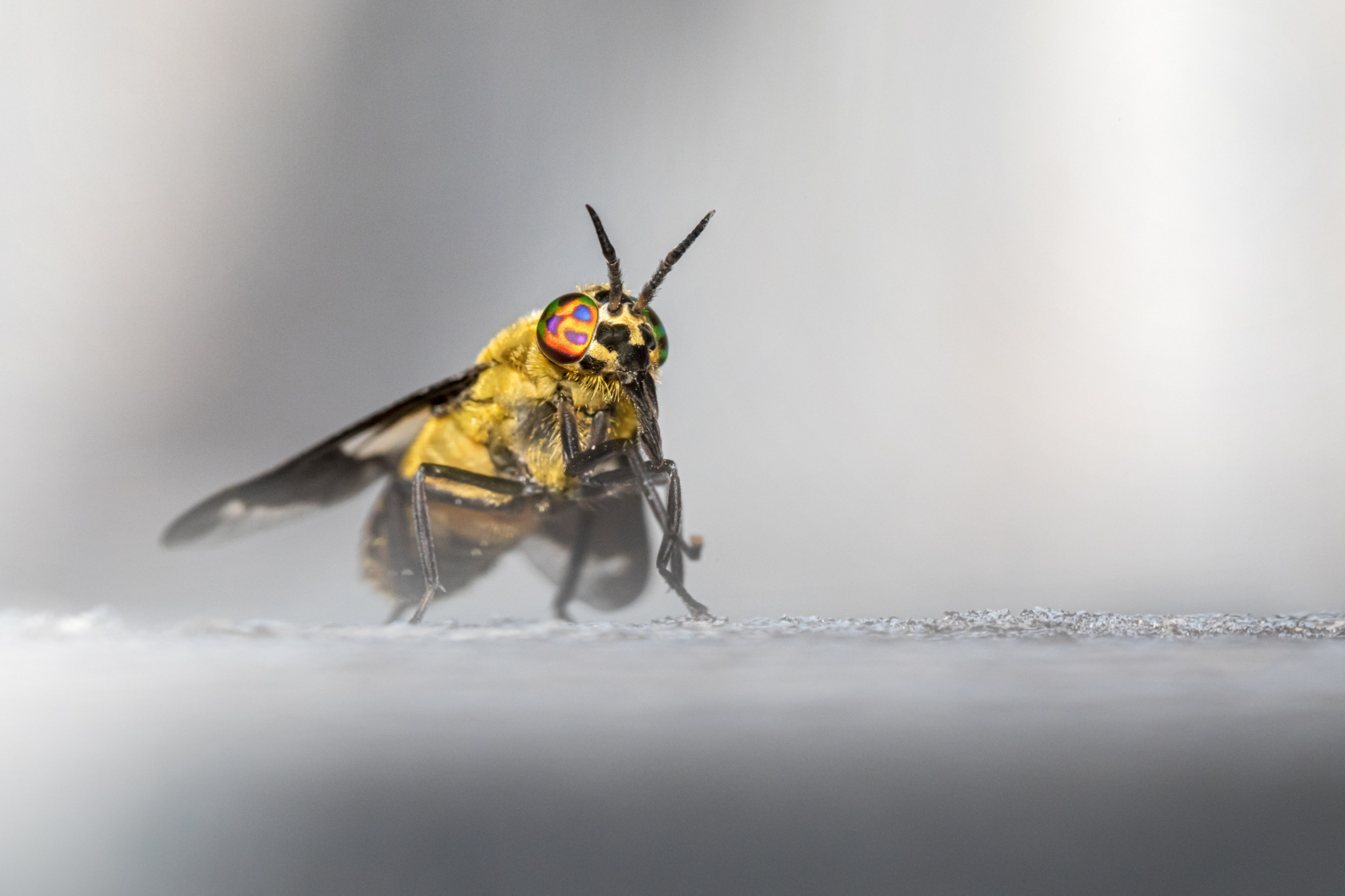
The Splayed Deer Fly (Chrysops caecutiens) is a species of biting fly belonging to the family Tabanidae. It is known for its distinctive appearance and painful bite, making it an unwelcome presence for both humans and animals in its native habitats.
Splayed Deer Flies are found primarily in Europe, particularly in forested areas and wetlands where their larvae develop in moist soil or decaying organic matter. They are most active during the summer months when temperatures are warm and conditions are favorable for breeding.
One of the most striking features of the Splayed Deer Fly is its large, prominent eyes, which are often brightly colored and iridescent. These compound eyes provide the fly with excellent vision, allowing it to locate potential hosts from a distance.
The Splayed Deer Fly feeds on the blood of mammals, including deer, cattle, horses, and occasionally humans. Females require a blood meal to develop their eggs, while males feed primarily on nectar and plant juices. When seeking a host, the female fly uses its sharp mouthparts to pierce the skin and extract blood, often leaving behind a painful bite and causing irritation to the host.
Despite their nuisance value to humans and animals, Splayed Deer Flies play a role in ecosystems as pollinators and as food sources for other animals. They are also indicators of habitat quality, as their presence or absence can provide valuable information about environmental conditions.
To mitigate the nuisance of Splayed Deer Flies, individuals can take precautions such as wearing protective clothing, using insect repellents, and avoiding areas where the flies are abundant. Additionally, habitat conservation efforts can help maintain natural predator-prey balances and reduce the likelihood of fly infestations in human-inhabited areas.
Subscribe to the newsletter:
